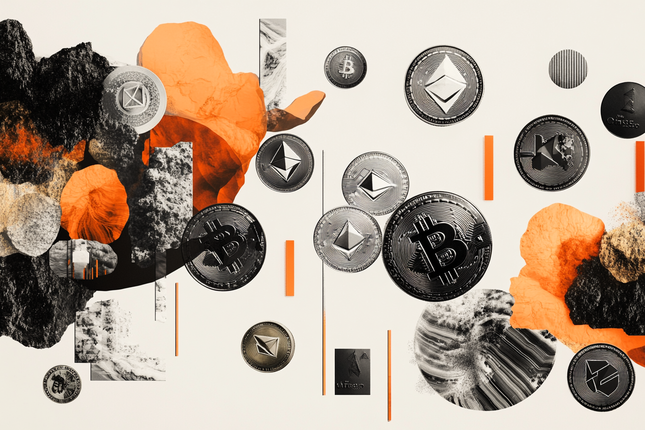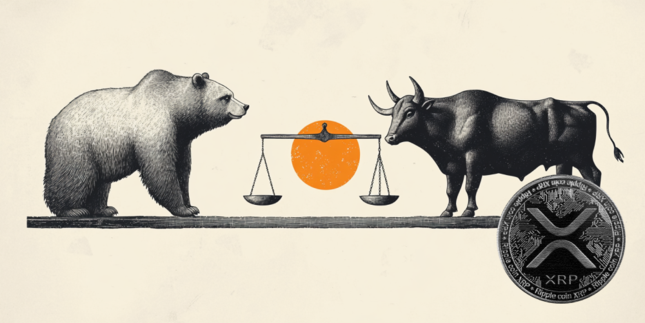One of the most astonishing things about altcoins is that nobody knows precisely how many exist.
This is an incredible fact with all the computer fire-power and the plethora of marketing and branding surrounding altcoins and crypto.
Miners and creators of these coins are clamoring to release new coins - some of which will be world-changing, while others will have no utility use at all.
Separating the wheat from the chaff is easily the most challenging aspect of cryptocurrency investment.
Coinmarketcap.com lists 9,425 coins. More than all the world's fiat currencies combined. It's hard to believe that the only cryptocurrency available 13-years ago was Bitcoin. Every sector of the economy now has a cryptocurrency.
These cryptocurrencies are geared toward using blockchain technology to transform a wide range of industries, from finance to health to energy to data storage to machine learning to payments to social media to supply and logistics to content ownership.
How can this happen when there are so many cryptocurrencies already in existence?
There are a variety of cryptos, each with a unique set of features. We see so many cryptocurrencies because they all use the existing underlying blockchain technology. As a result, you can generate different digital currencies for different purposes using the same platform as your base.
Cryptocurrencies are digital coins that you may exchange for real-world currency. We can use them like traditional fiat - as a store of value.
Some serve that purpose - others are for people who need a utility to work with their altcoins. These are a collection of cryptocurrencies being developed as a system. These can be utilized and built on top of an existing blockchain. For example, a network that has permitted the creation of token currency using its own protocols is Ethereum.
What we call app or platform cryptocurrencies are the other primary source of cryptocurrency. Developers also constructed these on top of the utility currencies that are currently in use. There are plenty of altcoins that have been launched using the Ethereum blockchain technology, for example.
The proliferation of altcoins is simply because no one is in charge of this blockchain technology. However, you can create your own virtual money if you know enough about how it works.
Satoshi Nakamoto, the supposed creator of Bitcoin, was the first to use blockchain technology to create a coin. But, it wasn't long before other programmers caught on and realized they, too, could use the same technology to create a superior "version” of this new “Bitcoin.”
In the end, professionals like Charlie Lee, a former Google programmer, helped to establish Litecoin, one of the earliest altcoins. He wasn't the only one. Others who were trying to create something comparable or better then followed him.
Bitcoin and a few other altcoins have had tremendous success, which is why there are so many cryptocurrencies. But, remember, when Bitcoin was first introduced, few people were interested. People ignored it or didn't bother to look at it because it was thought to have no inherent worth.
However, its value has grown over time. As recently as early 2017, Ethereum was seen as practically worthless. However, even those who bought Ether cryptocurrency saw colossal gains.
In 2017, Bitcoin and other altcoins exploded in popularity. At its all-time high, Bitcoin reached around $20,000 per BTC. Everyone realized what was going on. The cryptocurrency was the new holy grail of investing. Everyone wanted in.
Another reason for the increase in new cryptocurrencies is “forking.” Although forking isn't the primary cause of the wealth of various cryptocurrencies, it plays a role. For example, at least four known cryptocurrencies that "branched off" of Bitcoin - Bitcoin Cash, Bitcoin Gold, and Litecoin make up this group.
If you're interested in Litecoin, you'll want to check out Litecoin Cash (ETH). Even the newest cryptocurrencies are being compelled to invent new ones. A great example is Zcash, which resulted in Zclassic (ZCL) and then a twin fork between ZCL and Bitcoin, which led to Bitcoin Private (BTC).
The increasing demand for cryptocurrencies is driven by the inherent nature of innovation and the human need to improve ourselves continually. Consider the 3.4 million apps available from suppliers like Apple or Google as an example. There are many of them, but many of them do the same thing. Imagine a music-streaming app, for example. There are hundreds, not just one. Then, of course, we have our favorites and our haters. However, new ones are still continually being created, hoping to be the next best thing.
This is what it's like to use cryptocurrencies. More and more smart contracts are being developed, even though they all work similarly. All coin developers do is change a few things about the protocol and then claim to have the next groundbreaking platform for smart contracts.
Smart contracts will thrive on the Ethereum platform. There is now a slew of media using the same type of token and network. Ethereum is being overtaken by competitors, including NEO (the Chinese Ethereum), Cardano (the Japanese Ethereum), Stellar (the Stellar Blockchain), and EOS (the EOS Blockchain).
Another factor in the proliferation of cryptocurrencies is the ICO boom. In the wake of the success of some of these token sales, crypto designers and developers are hoping to follow these releases.
The lack of regulatory oversight in the ICO ecosystem has made this process even simpler. They will market these initial coin offerings as crypto tokens on trading marketplaces like Bittrex. Mastercoin was the first coin to be offered for sale in 2013. After the success of Ethereum, NXT, IOTA, and Stratis's crowd sales, among others, other cryptocurrencies quickly followed in their wake.
There have been ICOs in the financial sector, in supply and logistics, gambling, and insurance industries - to name but a few. Inevitably, this use across a wide range of applications will lead to a massive increase in the number of cryptocurrencies.
While devs built some ICOs on Ethereum's host platform, many others are creating their own blockchains and launching their own independent ICOs.
Network transactions are based on the native currency of each country. As a result, if a thousand ICOs are a success, there will be an equal number of cryptocurrencies. So there's no need to worry because many others have failed to get past the planning stage.
Having numerous cryptocurrencies isn't necessarily a negative thing. However, each altcoin's contribution to society is the most critical factor.
For some, speculation is the primary goal of their existence. Most of the speculative coins will go out of business when the bubble ultimately collapses’ if that’s the motivating force behind them. The public may adopt none or only a few ideas.
Back at the birth of the Internet, who could have predicted the success of Google, Apple, Amazon, or Facebook?
This is where we are with altcoins right now.
So who will be the FANGs of the coming Web 3 revolution?
All statements presented in this website are the exclusive opinions of NOBLE GOLD, INC. and no other party. It must be emphasized that the performance of investments or purchases that have occurred previously may not be taken as predicting future performance or results. Investing in precious metals, including gold coins, gold or silver bars, involve risks, and may not be appropriate for all investors. The value of these items may change depending on various conditions, and may fluctuate, accordingly. NOBLE GOLD, INC. makes no representations or guarantees that metals purchased will appreciate in value. Any decision to buy or sell precious metals must be that of the customer, acting alone, and should be made with caution, on the basis of the customer’s own personal investigation and research, and exclusive judgment. By accessing the information presented on this website and utilizing the services of NOBLE GOLD, INC. you hereby agree to be bound by the terms of service and privacy policy of the Company.
Recommended Content
Editors’ Picks

Shiba Inu eyes positive returns in April as SHIB price inches towards $0.000015
Shiba Inu's on-chain metrics reveal robust adoption, as addresses with balances surge to 1.4 million. Shiba Inu's returns stand at a solid 14.4% so far in April, poised to snap a three-month bearish trend from earlier this year.

AI tokens TAO, FET, AI16Z surge despite NVIDIA excluding crypto-related projects from its Inception program
AI tokens, including Bittensor and Artificial Superintelligence Alliance, climbed this week, with ai16z still extending gains at the time of writing on Friday. The uptick in prices of AI tokens reflects a broader bullish sentiment across the cryptocurrency market.

Bitcoin Weekly Forecast: BTC consolidates after posting over 10% weekly surge
Bitcoin price is consolidating around $94,000 at the time of writing on Friday, holding onto the recent 10% increase seen earlier this week. This week’s rally was supported by strong institutional demand, as US spot ETFs recorded a total inflow of $2.68 billion until Thursday.

XRP price could renew 25% breakout bid on surging institutional and retail adoption
Ripple price consolidates, trading at $2.18 at the time of writing on Friday, following mid-week gains to $2.30. The rejection from this weekly high led to the price of XRP dropping to the previous day’s low at $2.11, followed by a minor reversal.

Bitcoin Weekly Forecast: BTC consolidates after posting over 10% weekly surge
Bitcoin (BTC) price is consolidating around $94,000 at the time of writing on Friday, holding onto the recent 10% increase seen earlier this week.

The Best brokers to trade EUR/USD
SPONSORED Discover the top brokers for trading EUR/USD in 2025. Our list features brokers with competitive spreads, fast execution, and powerful platforms. Whether you're a beginner or an expert, find the right partner to navigate the dynamic Forex market.
-637886789868914496.png)